Nutrition
If you find a broken link in this list, please report it to the webmaster.
10 of the most hydrating foods
Staying hydrated isn't just about drinking water and non-alcoholic drinks - 20% of our fluid comes from food. Discover 10 of the best to boost your intake.
According to the British Nutrition Foundation, we get about 20% of our total fluid intake from the food in our diet.
The NHS Eatwell Guide recommends a daily intake of six to eight glasses of fluid to maintain optimum hydration levels, but eating the right foods can make all the difference to how thirsty and parched you feel, especially on hot summer days.
While foods that are overly high in protein, insoluble fibre or salt and diuretic foods like asparagus can have the opposite effect, reducing bio-available H20 in the body, these 10 water-packed wonders boost the body's hydration levels and can even help replenish lost electrolytes.
Signs of dehydration and strategies to stay hydrated
1. Watermelons
Research from the University of Aberdeen shows that certain relatively low fibre, water-packed fruits and veggies may hydrate the body twice as effectively as water. The study identified watermelon as the superstar hydrating fruit. Watermelons contain a staggering 92% water, along with 8% sugar and a variety of mineral salts that are essential for optimum hydration, including sodium, magnesium and potassium.
10 foods that can help protect against sun - including watermelon
2. Cucumbers
Cucumbers are packed with even more H20 than watermelons, boasting a water content of 96%. Ideal post-workout or if you're nursing a hangover, munching on cucumber can, according to the University of Aberdeen study, deliver the same hydration levels as twice the volume of water, thanks to the salad veggie's mineral salts and sugars, which mimic the body's natural electrolyte balance. Peeling the fibrous skin will further boost the cucumber's hydrating effects.
10 wrinkle-busting foods - including cucumber
3. Bananas
The classic healthy post-workout snack, bananas are packed with potassium, one of the most important electrolytes. Dehydration can cause an imbalance of electrolytes in the body, so eating potassium-rich foods when you're feeling parched should help stave off the symptoms. Bananas also contain 74% water, another good reason to eat the fruit after exercise.
4. Strawberries
Strawberries have the highest water content of all the berries, a whopping 92% in fact, making them a tasty hydrating food.
Serving them the traditional way with cream will of course up the liquid content, and blending your strawberries will help break down the fibre, increasing your body's absorption of the fruit's water content.
5. Milk
Yes, it's not a food as such but drinking milk may actually be better at hydrating the body than water or sports drinks. Who knew?
A 2011 study from McMaster University in the Canada found that milk is more effective than the usual rehydration drinks, thanks to its combo of high quality high quality protein, carbs, calcium and electrolytes.
6. Spinach
When it comes to staying hydrated, maintaining a balance of mineral salts is of course just as important as absorbing enough water from food and drink. Spinach is the richest dietary source weight for weight of magnesium, an essential electrolyte like potassium and sodium. Along with its 92% water content, this makes it a very useful hydrating food.
7. Iceberg lettuce
It may not pack as much nutrition punch as dark leafy greens such as spinach or kale, but crunchy iceberg lettuce beats its more virtuous cousins in the water content stakes. The pale salad green is almost all water – it contains an incredible 96% H20. Although the fibre content may undo some of its hydrating magic, eating a bowl of iceberg lettuce should help replenish your body's hydration levels as well as a similar quantity of water.
Work iceberg lettuce into a recipe – BBQ chimichurri kebabs
8. Radishes
Another tasty H20-packed food you can snack on to prevent dehydration, radishes are comprised of 95% water, almost as much as iceberg lettuce. The radish is considered a cooling food in folk medicine and many people swear by its heat-dissipating properties. For maximum hydrating effects, peel the radish to remove some of the fibre.
9. Tomatoes
There's a good reason tomatoes are a cornerstone of the Mediterranean diet – as well as being wonderfully nutritious, they can help the body stay nice and hydrated. Tomatoes contain up to 94% water. Again, peeling the fibrous skin will help boost the tomato's hydrating powers. Blanching in boiling water, then placing the tomato in ice-cold water should help the skin come off easily.
Visit our tomato hub for delicious recipes
10. Soup
It's stating the obvious we know, but chowing down on soup is a fantastic way to increase hydration levels in the body. Stick to veggie soups or light bone broths, and go easy on the salt.
Blending veggies breaks down the plants' tough cellular walls, allowing the nutrients as well as the water content to be absorbed by the body more readily.
*** CLICK AT ANY PICTURE below TO ENLARGE IT and see a SLIDE SHOW***
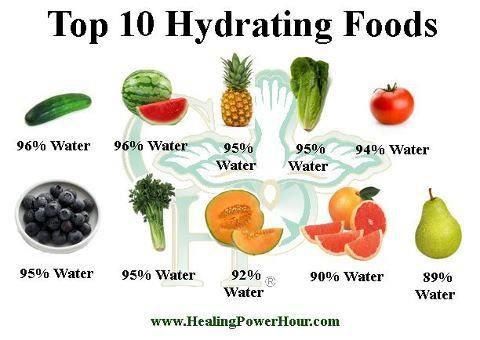 |
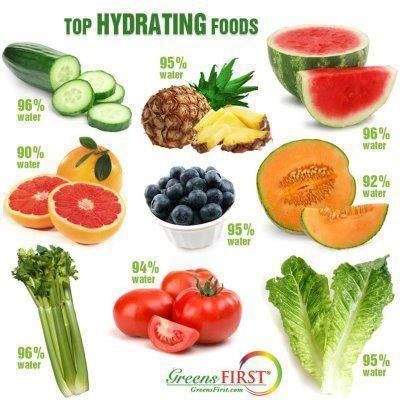 |
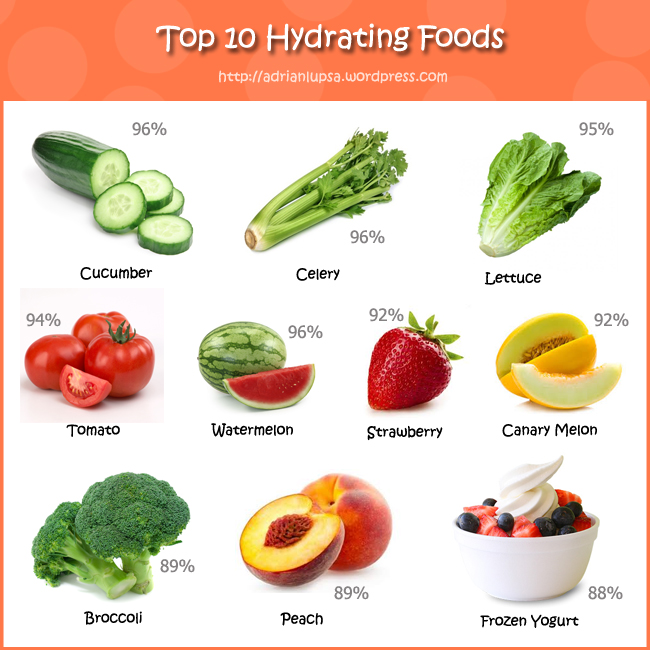 |
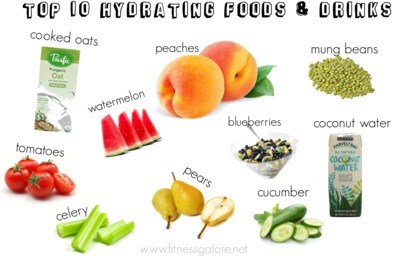 |
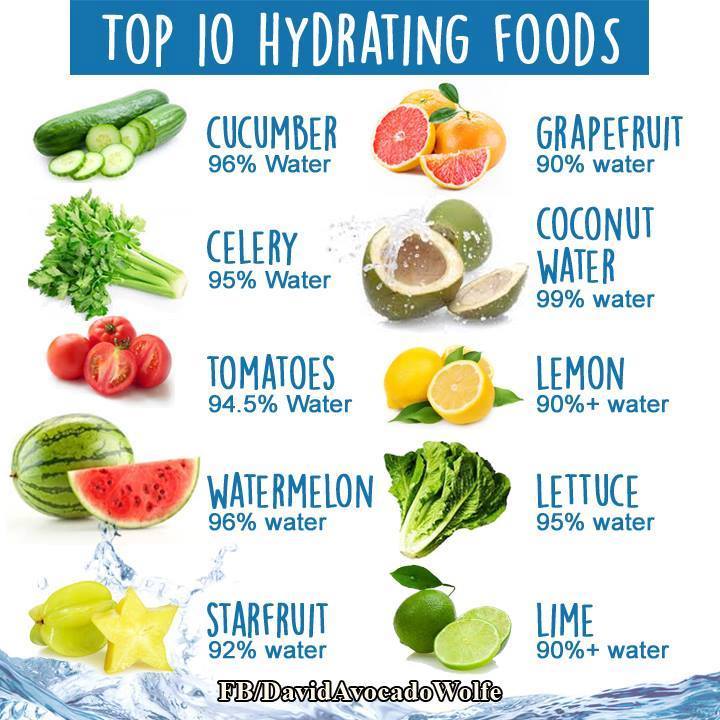 |
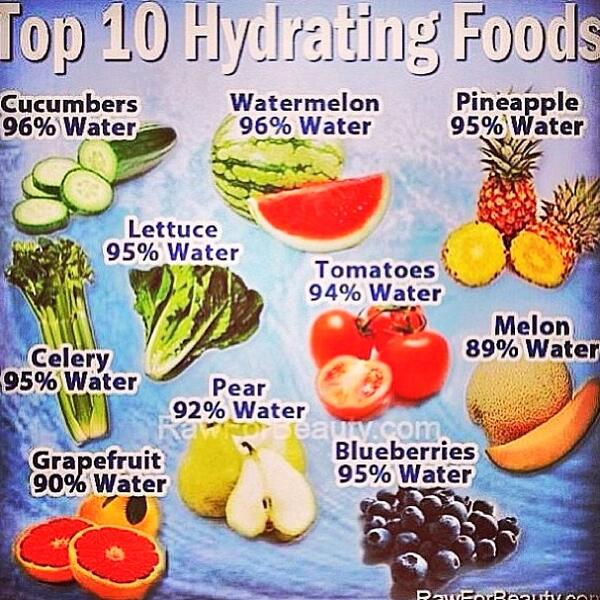 |
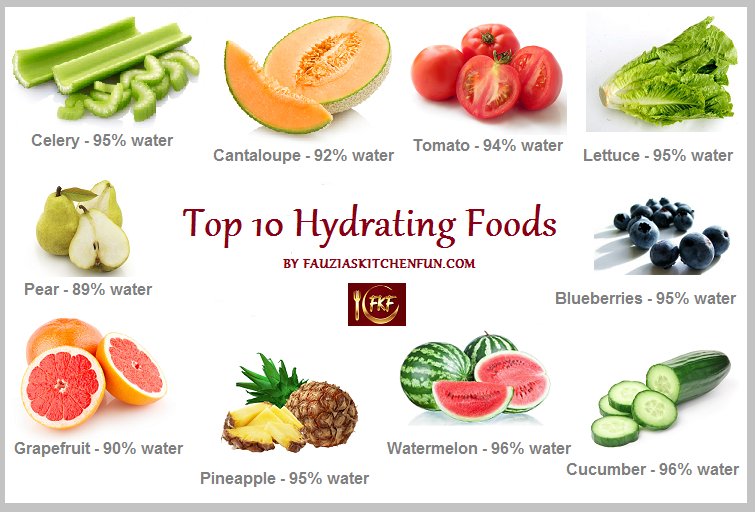 |
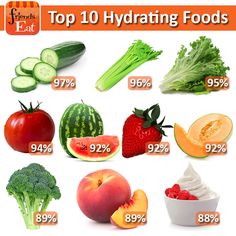 |
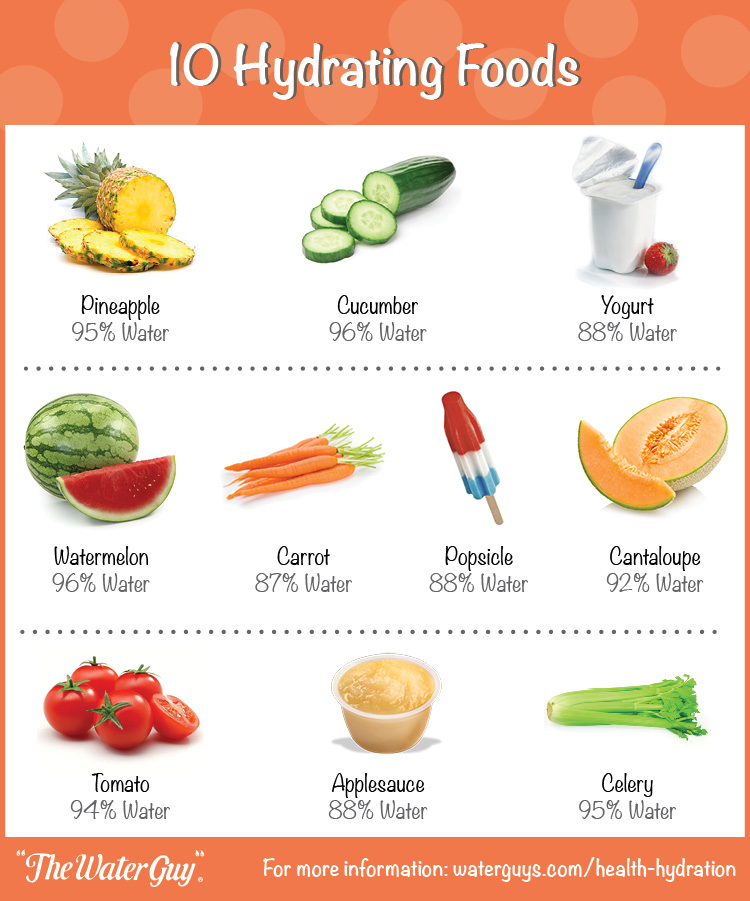 |
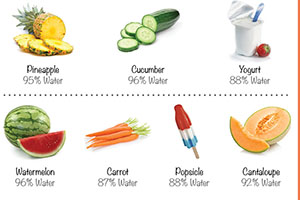 |
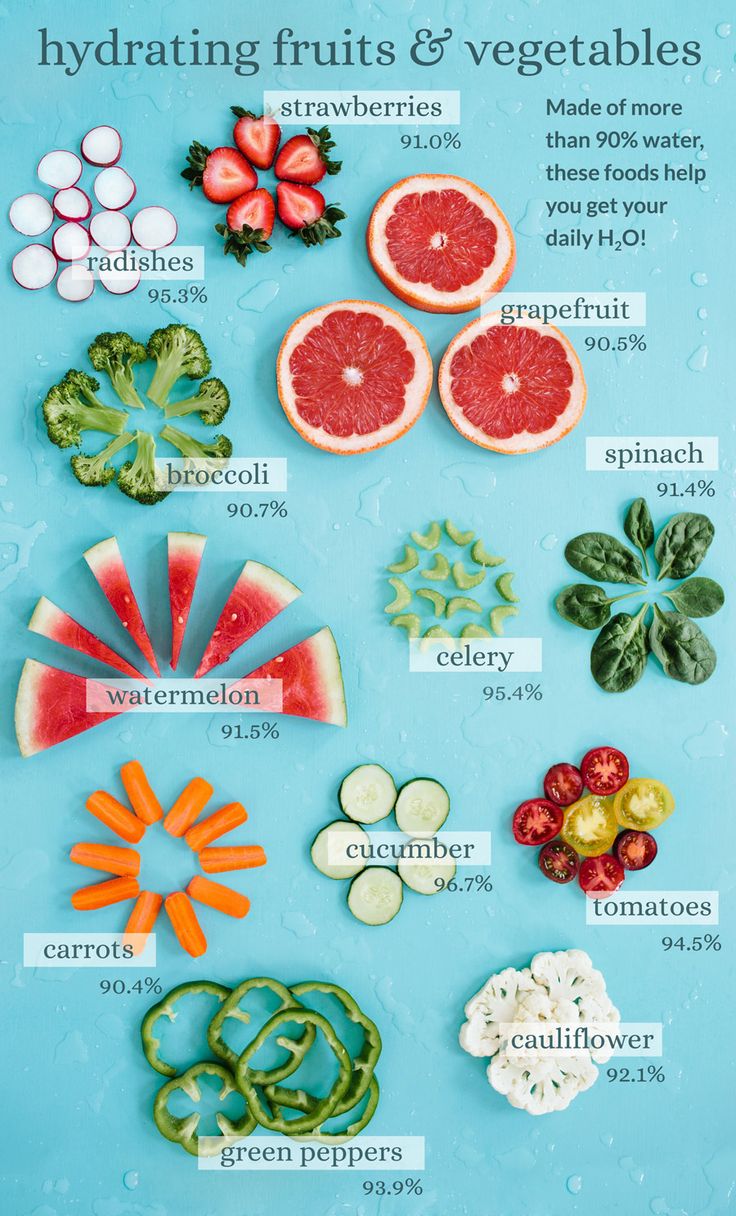 |
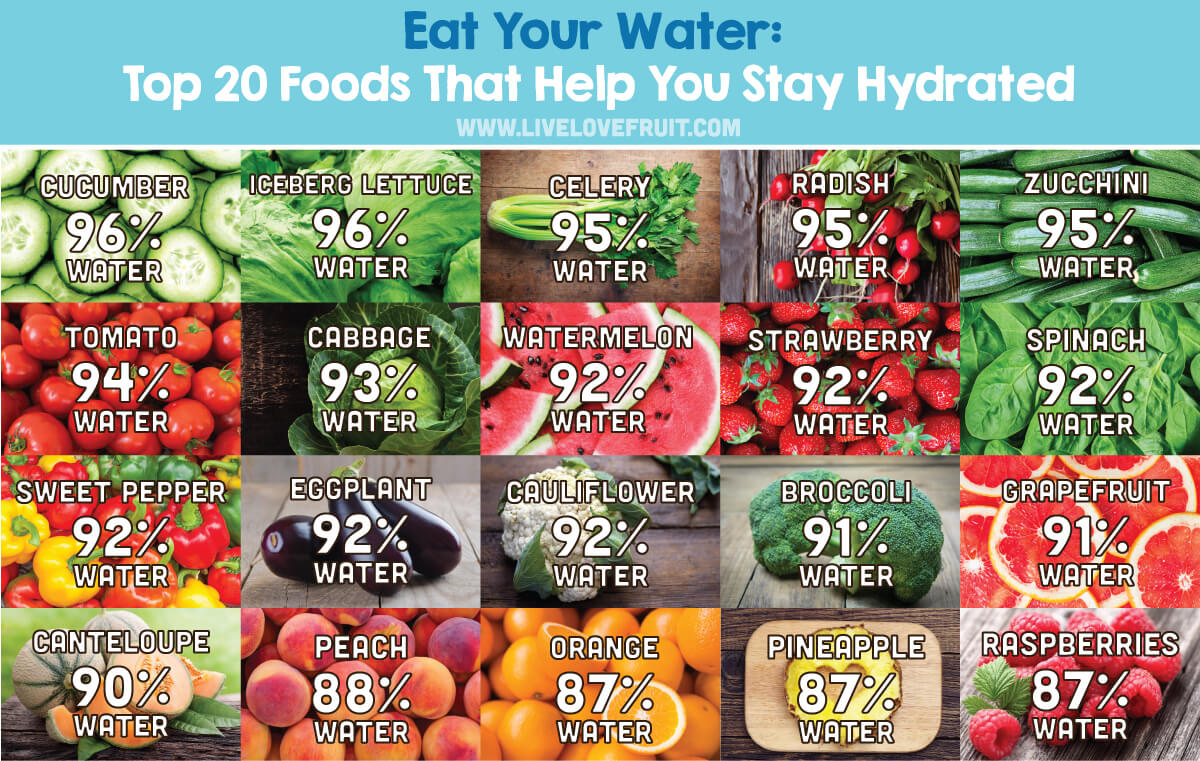 |
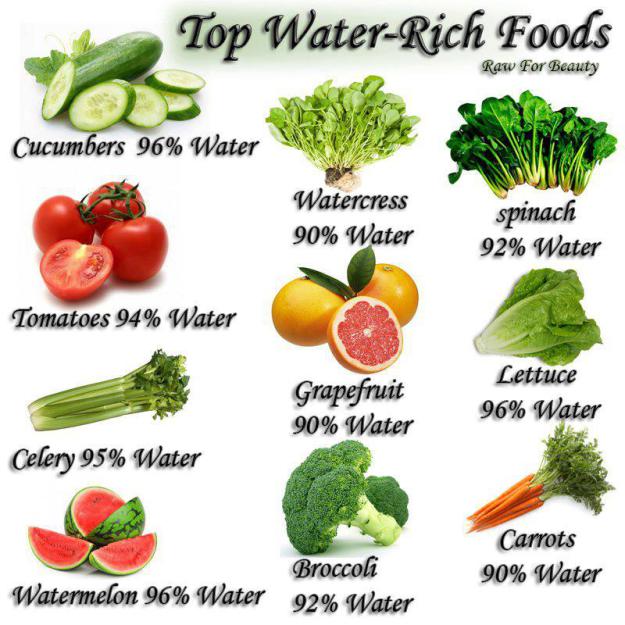 |
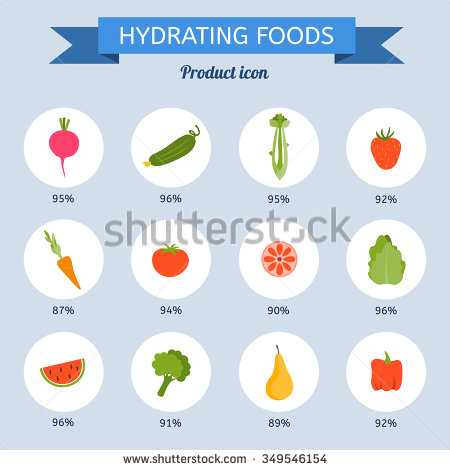 |
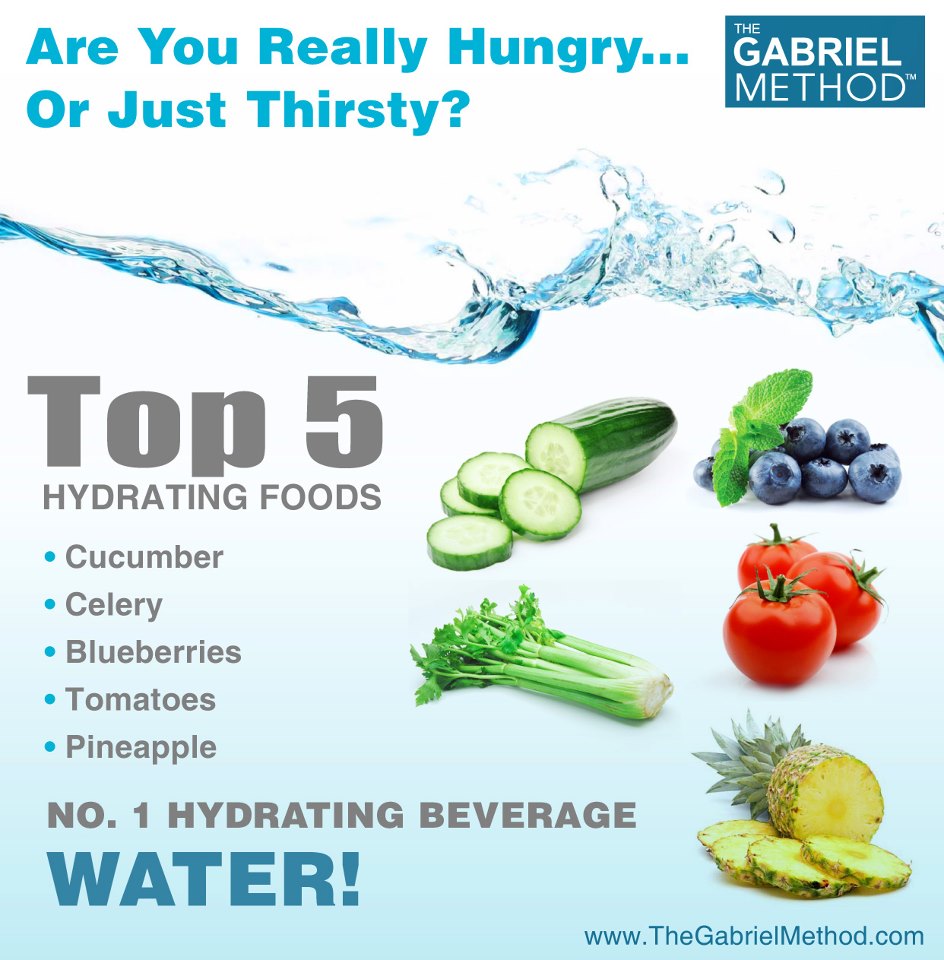 |
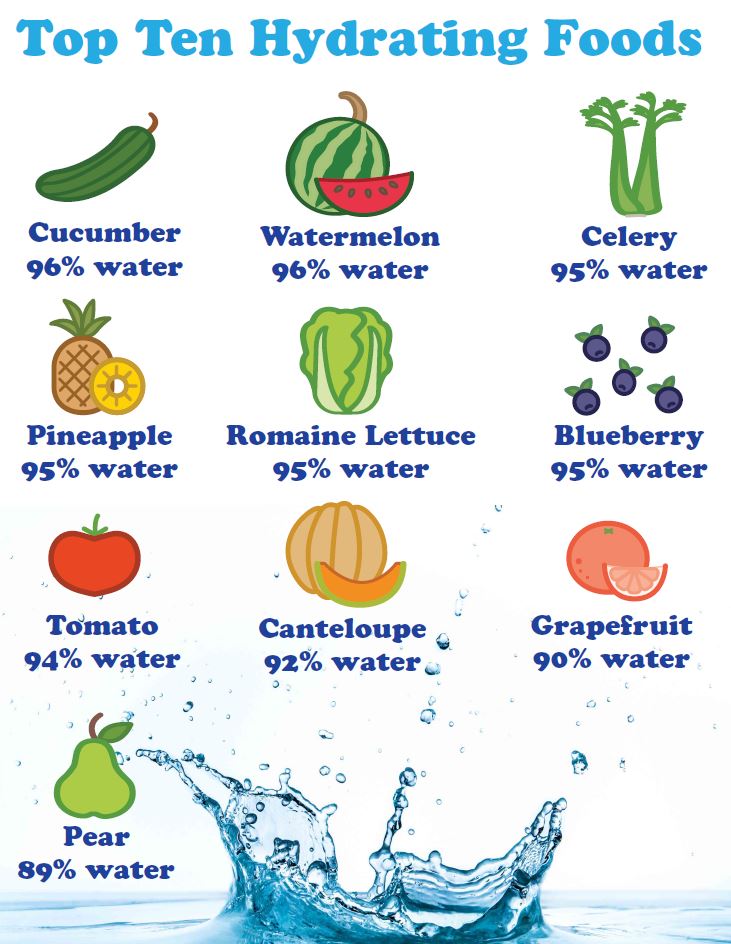 |
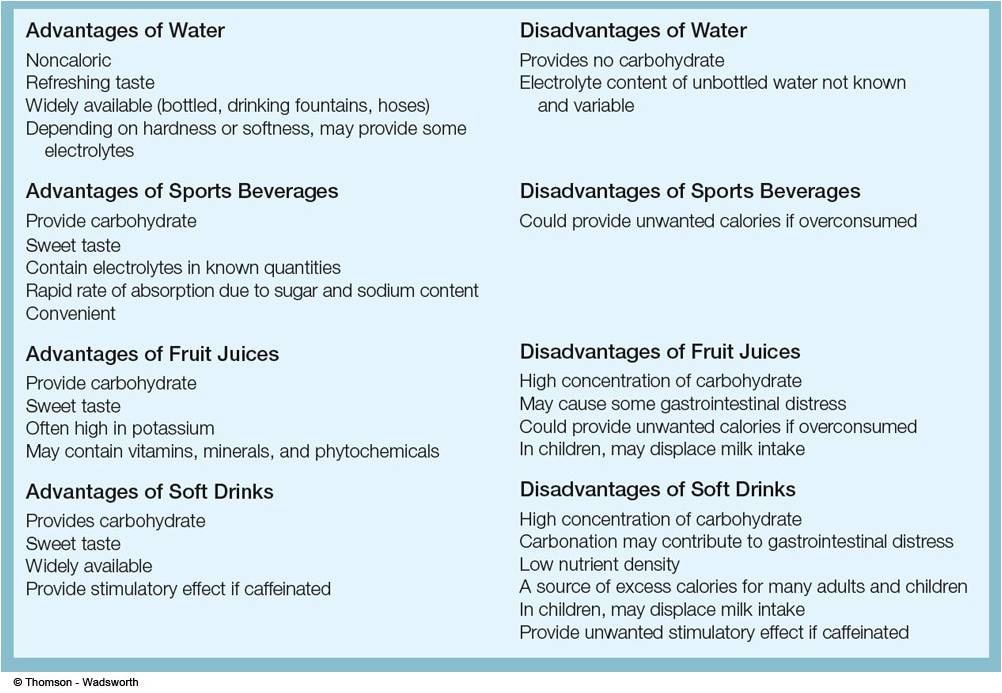 |
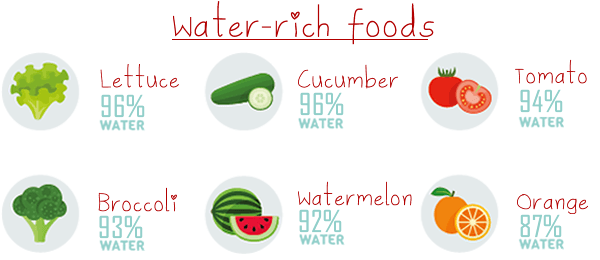 |
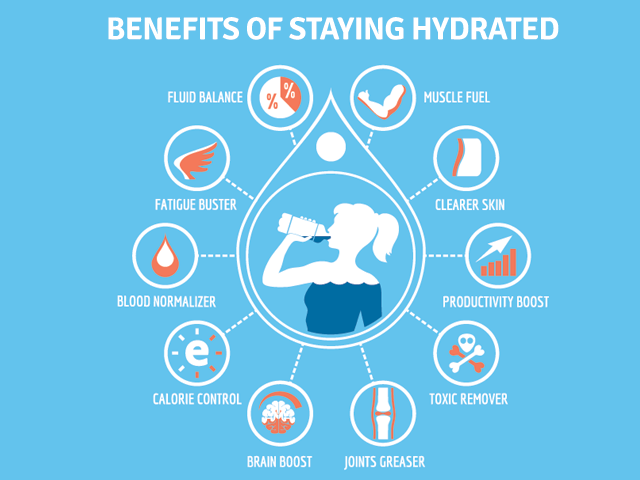 |
